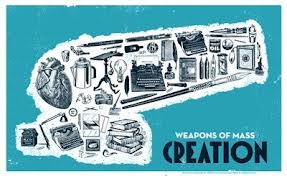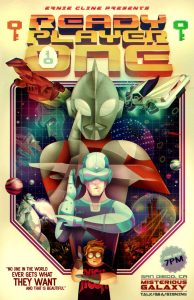(i) Secondary and Theoretical Works
-Brooks, Peter. Reading for the Plot : Design and Intention in Narrative. New York : A.A. Knopf, 1984., 1984.
– Feminist Theory: A Reader, ed. Wendy Kolmar and Frances Bartkowski. Fourth Edition (2013). (Specifically looking at pieces on intersectionality.)
– Gilbert, Sandra M. and Susan Gubar. The Madwoman in the Attic: The Woman Writer and the Nineteenth-Century Literary Imagination. New Haven : Yale University Press, 2000., 2000.
– Killick, Tim. British Short Fiction in the Early Nineteenth Century: The Rise of the Tale. Ashgate, 2008.
– Korte, Barbara. The Short Story in Britain: A Historical Sketch and Anthology. Francke, 2003. (Historical context on the short story.)
– Spillers, Hortense J. Black, White, and in Color : Essays on American Literature and Culture. Chicago : University of Chicago Press, [2003], 2003.
– Węgrodzka, Jadwiga. Characters in Literary Fictions. Frankfurt am Main ; New York : Peter Lang, 2015., 2015. Mediated fictions: volume 9. (Reading for information on the “ficelle.”
(ii) Primary Works
Anthologies- (Still working through these)
Denisoff, Dennis. The Broadview Anthology of Victorian Short Stories. Broadview, 2004. (still narrowing these)
– Devine, Harriet. Nineteenth-Century Short Stories by Women: A Routledge Anthology. London ; New York : Routledge, 1998., 1998. eBook Academic Collection.
Specific Short Stories-
– “Eveline’s Visitant,” (1862) by Mary Elizabeth Braddon found in The Broadview Anthology of Victorian Short Stories
– Gaskell, Elizabeth Cleghorn. Cousin Phillis. [Auckland]: The Floating Press, 2010.
– Gilman, Charlotte Perkins. The Yellow Wallpaper. EBL, [Auckland, N.Z.] : Floating Press, c2009., 2009.
– Gaskell, Elizabeth Cleghorn. Lois the Witch: and other tales. 1861. (Contains five short stories)
– “The End of Her Journey” by Lucy Clifford, found in Nineteenth-Century Short Stories by Women: A Routledge Anthology
– “The Spell of the White Elf” by Mary Chavelita Bright (Pseudonym: George Egerton) found in The Broadview Anthology of Victorian Short Stories
– “The Three Damsels” by Mary Diana Dods (Psyeudonym: David Lynsay) found in Nineteenth-Century Short Stories by Women: A Routledge Anthology
(iii) Journals
–Victorians Institute Journal. Norfolk, VA : Old Dominion University
– Victorian Literature and Culture, published by Cambridge University Press
– Victorian Studies, published by Indiana University Press
(iii) Key Words
Intersectionality, 19th-century short stories, transatlantic, mental health (?), colonialism
(iv) My Topic
As of right now, my topic for my English senior thesis is somewhat broad. At first, I planned to look solely at Victorian short stories with an intersectional lens, focusing on supporting characters otherwise known as the “ficelle.” These characters are often described in racial terms within Victorian literature which make them rich and thus allowing me to analyze how the intersections of race, gender, sexuality, and class work together within these characters to affect their status and role. Furthermore, certain patterns have been popping up as I began my research. Issues of mental health, especially in terms of the ‘mad’ or ‘hysterical’ woman have been showing up as I begin my studies. I was convinced I wanted to focus only on Victorian short stories, however, after speaking further with Professor Seiler, I am now interested in a transatlantic focus. I might shift my focus to both American and British 19th century short stories, drawing connections between the two. This will open up my research to African American literature as well. Overall, my studies will mainly follow feminist literary analysis, while also considering scholarly work on race, class, and sexuality. Toni Morrison’s “Playing in the Dark” will be a particularly useful text to me as I continue my studies, and even was a recommendation of Professor Seiler’s.
My thesis is driven by numerous questions. What does it mean for me to use an intersectional lens to analyze a text created in a time prior to the coining of this term? How do the characters in 19th century short stories represent an intersectional experience, even if this term did not yet exist? What patterns can I note throughout these stories that are related to identity? How does the form of the short story contribute to feminist policies and ideals? How are the intersections of different identities present within these texts?
Update on Progress:
While my project has not changed much in terms of the ideas I plan to pursue, I have expanded on many of my sources. After having a productive meeting with Professor Kersh, I have found several secondary sources that might provide insight into my topic of women within the 19th-century. I have added two journals that focus on the Victorian period, which I plan to use largely for their historical/cultural context. I have also added a few secondary texts to my reading list, one of which being Peter Brooks’s Reading for the Plot : Design and Intention in Narrative. I plan to use this source to explore the form of the short story and its narration, especially how it can be used to provide a social commentary. I have also added Sandra Gilbert’s and Susan Gubar’s The Madwoman in the Attic: The Woman Writer and the Nineteenth-Century Literary Imagination as a means of analyzing the intersections of gender and mental health. Even if I decide not to pursue the avenue of mental health, this text will help me in understanding the position of women within the Nineteenth-Century and the role literature played in this position.
As of right now, my thesis is still broader than I would like it to be. I am currently digging through several different anthologies that contain numerous 19th-century short stories. In doing so, several questions have arisen for me. Do I want to focus on short stories written only by women? Or do I want to use stories written by male authors to incorporate another perspective on the role of 19th-century women? As of right now, I am leaning towards the latter, although this does broaden my pool of primary sources quite a bit. I also want to ensure that I allow space for otherwise ignored female 19th-century voices, as one of the goals of feminist literary analysis is to study texts written by those who are marginalized. I am also concerned about my transatlantic focus being too broad. As it might be gathered by my somewhat disorganized list of primary sources, it has been difficult for me to narrow my sources. This may be a result of my lack of commitment to a specific, narrowed topic. Currently, my primary texts focus on female 19th-century authors, especially within the Victorian period. I have found myself drawn to these stories; however, I am allowing myself room to find more American 19th-century short stories as I continue working on this project.
Despite my lack of full clarity in terms of my primary focus, the trajectory of my thesis remains the same. I am still most interested in looking at 19th-century short stories with a feminist lens; however, I find myself being torn in two directions. One direction involves using an intersectional lens to track how these short stories deal with gender, race, and class, especially against the backdrop of colonialism. Another direction I may pursue is focusing more on the intersections of gender and sexuality, which may involve a closer look at mental health in these texts. Although I have not yet officially decided on either path, I find myself most interested in a focus on gender and sexuality. My main question right now is: can I find a way to combine these two paths to create a coherent, specific thesis that can go in depth into each theme? I believe that as I continue to dig through my primary texts, the answer to this question will become evident.


